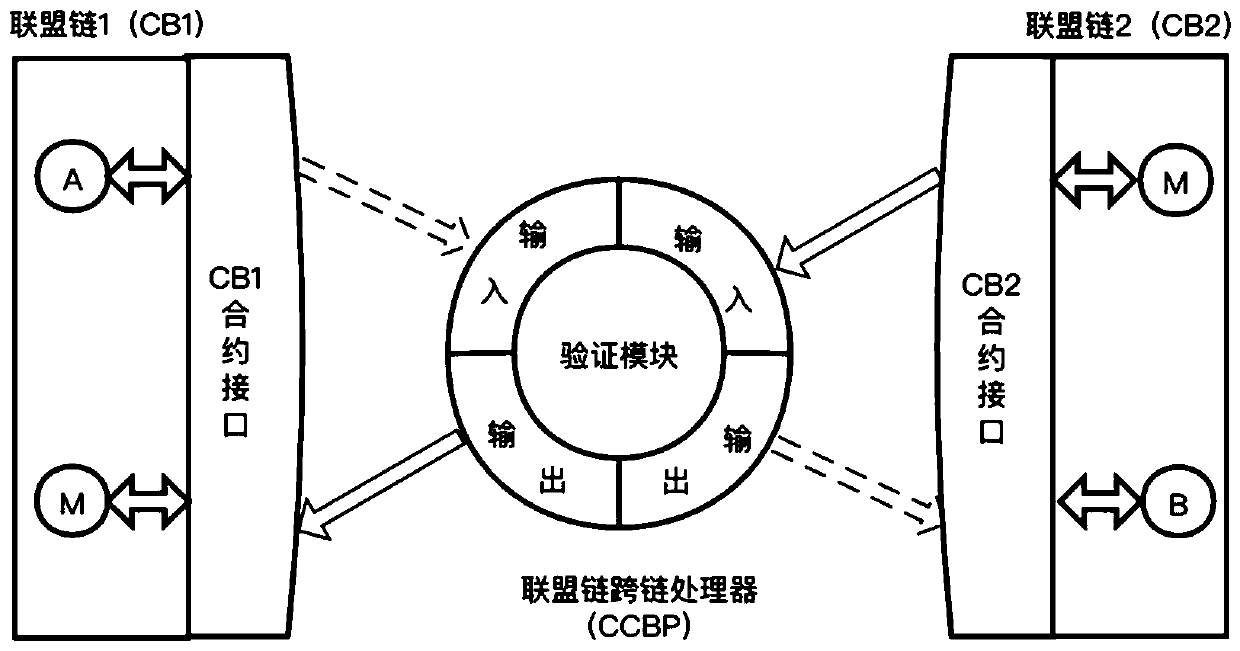Cross-chain transaction system and method for alliance block chain and storage medium
A transaction system and blockchain technology, applied in the payment system, payment system structure, data processing application, etc., can solve the problem that the cross-chain transaction processing system or method of the alliance chain is rarely mature, and achieve fraud prevention, guarantee safety effect
- Summary
- Abstract
- Description
- Claims
- Application Information
AI Technical Summary
Problems solved by technology
Method used
Image
Examples
Embodiment 1
[0042] This embodiment provides a cross-chain transaction system and method for consortium blockchains. The research objects of this embodiment are two consortium blockchains: the first consortium chain (CB 1 ), the second consortium chain (CB 2 ). This example will give CB 1 ,CB 2 The active cross-chain transaction method between them. Cross-chain transactions refer to users making transactions between two blockchains, that is, assets in CB 1 ,CB 2 The process of transferring back and forth between. At present, most cross-chain transactions are implemented by destroying corresponding assets on the first blockchain and creating / releasing corresponding assets on the second blockchain, which can be regarded as a special transaction on the blockchain. trade.
[0043] Such as figure 1 As shown, the main technical idea provided by this embodiment is: when a transaction Tx occurs on the first consortium chain 1 , the first consortium chain needs to provide the second conso...
PUM
 Login to View More
Login to View More Abstract
Description
Claims
Application Information
 Login to View More
Login to View More - R&D
- Intellectual Property
- Life Sciences
- Materials
- Tech Scout
- Unparalleled Data Quality
- Higher Quality Content
- 60% Fewer Hallucinations
Browse by: Latest US Patents, China's latest patents, Technical Efficacy Thesaurus, Application Domain, Technology Topic, Popular Technical Reports.
© 2025 PatSnap. All rights reserved.Legal|Privacy policy|Modern Slavery Act Transparency Statement|Sitemap|About US| Contact US: help@patsnap.com



